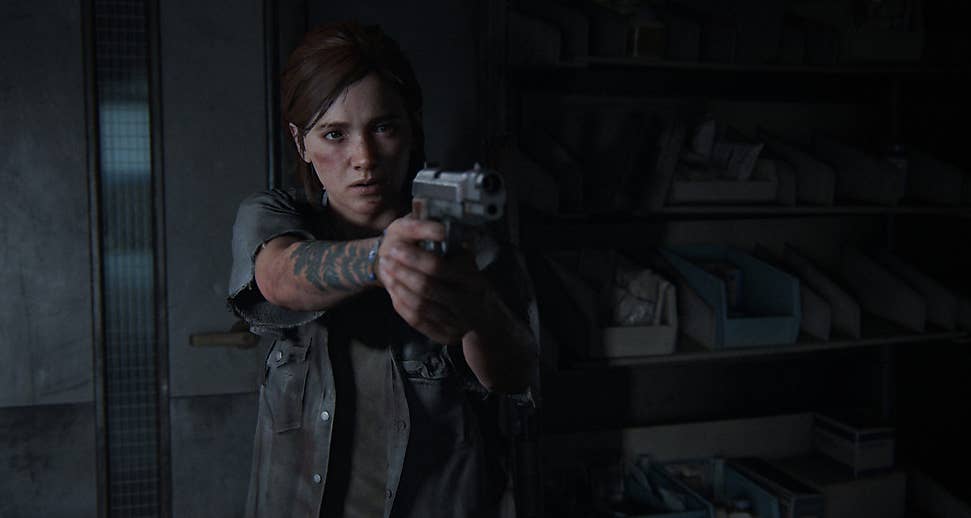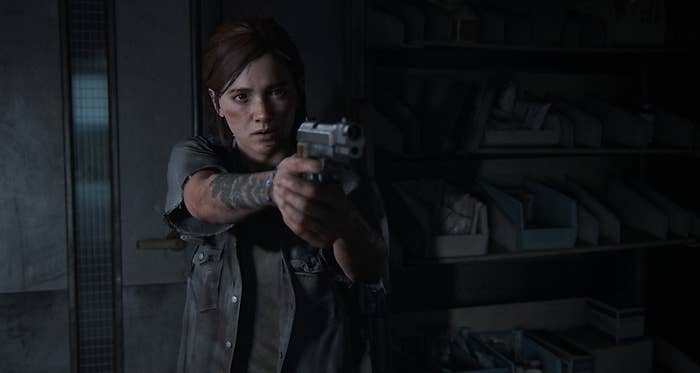
Naughty Dog's The Last of Us Part II is a dark, unrelenting experience. It is a cautionary tale about the cycle of violence, accomplished by subjecting you, the player, to some of the most graphic, harrowing violence ever portrayed in a video game. Blood gurgles in your enemies' lungs when you slit their throats. They mourn over fallen comrades. They beg for their lives.
Many characters die, slowly and painfully, and those who survive are diminished, physically or spiritually, in some fundamental way. This is not cinematic "video game violence," aesthetically designed to reinforce your character's badassery. This is the type of macabre you see in the dark corners of the Internet, where users post shock images that you can't unsee.
Let's talk about the Trip Mine, for example. As in the first game, you collect household items—bits of rag, rubbing alcohol—and craft them into health kits or makeshift weapons. A container and enough fertilizer yields an explosive Trip Mine, which you can strategically plant on the ground. Then you hide, draw the enemy's attention, and wait.
When this Trip Mine rips through a human target, it's horrifying. The blood 'mists' in the air. Chunks of flesh scatter on the ground. The blood pools and smears on the concrete, and the victim's clothes glisten with fresh blood. Years ago, I saw a post-mortem photo of a man who had jumped to his death from a great height. His insides were outside of him; he resembled a human being in a general sense, but he looked oddly shapeless and slack when smashed against the sidewalk. That's what the dead people in The Last of Us Part II look like—anatomically correct and bracingly real. It wouldn't surprise me if the developers used autopsy and crime scene photos to ensure accuracy.
Your distaste for this violence is the point. And when the game is over, you feel relieved—which, I suppose, is also the point. The lesson that "violence is self-destructive and all-consuming" is an old one, but the attempt to teach that lesson—by forcing us to engage in despicable acts and be disgusted by ourselves—is fairly new and unique to interactive fiction like video games.
Is it an effective or necessary technique? It can be, in moderation. But when carried out to this scale and magnitude, it feels emotionally manipulative. To progress the narrative, you need to kill. So, you kill. The average player will, as a matter of necessity, kill several dogs on a playthrough of The Last of Us Part II, because they can track your scent and call in reinforcements. It is a cruel irony that the best way to minimize the overall bloodshed is to add to it.
That it's technically possible to stealth the majority of the game (thus, one might argue, violence is a moral choice the player makes) is a rhetorical dodge that does not speak honestly to what this game is. The means for stealth—throwing a bottle or brick to distract someone, tracking the guards' patrol paths, lying in the tall grass—are less substantial when compared to your options for causing ultra-violent mayhem. To ghost every encounter is to eliminate some of the game's most engaging components. And no atrocities you commit change the outcome of the story.
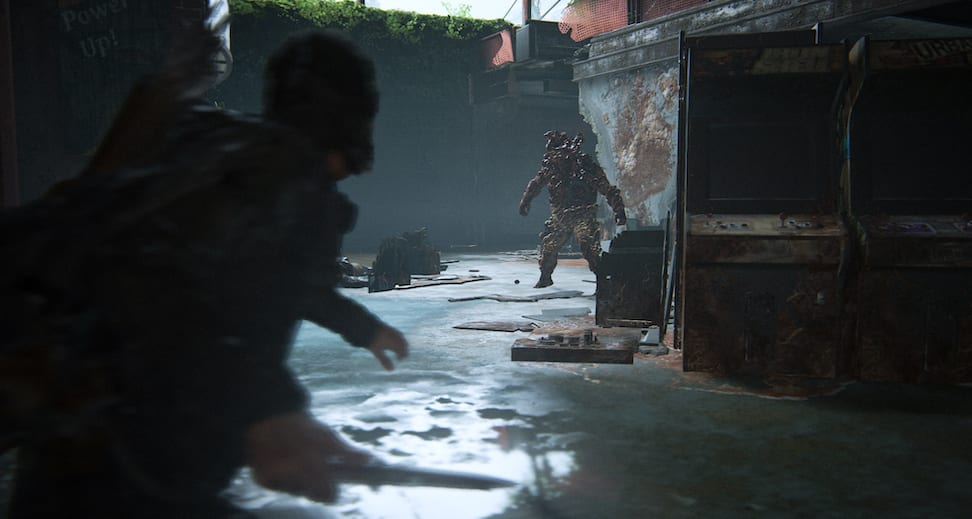
This is a story about bloody revenge; writer and director Neil Druckmann has stated that if the first game is about love, and the extreme lengths people will go to in service of it, then this sequel is about hate. But in the first game, there was an interesting, contradictory tension to committing awful, hateful acts in the name of love. Is it possible to commit loving acts in the name of hate? Or is it simply hate for its own sake? Hate is rarely as compelling or complex as love.
[Ed note: Spoilers of Naughty Dog's The Last of Us Part II follow.]
In The Last of Us Part II, you play as 19-year-old Ellie (Ashley Johnson), five years after the events of the first game, and 25 years after the global outbreak of the Cordyceps Brain Infection. She's settled in the fortified community of Jackson, Wyoming, a haven in the middle of hell. Jackson has electricity; children have snowball fights.
Life for Ellie is better, relatively speaking, than it's ever been. She has a patrolling job that she's good at. She has adult, romantic feelings for another girl named Dina. She has a relationship, albeit strained, with her protector and father figure, Joel. And she's getting good at playing the guitar. One of the game's more noteworthy innovations is letting you play the guitar through ingenious use of the touchpad and the analog stick. Point the analog stick in a direction, and Ellie will set her fingers on the guitar's neck to a specific chord. Run your finger along the touchpad, and Ellie will strum.
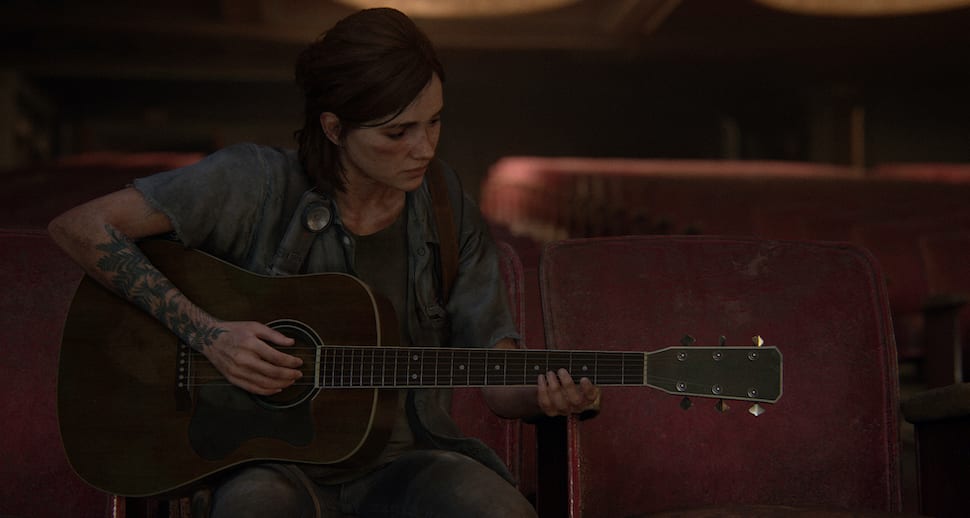
But then, a traumatic, violent event disrupts the relative tranquility. The act is shown in enough graphic, cringeworthy detail that when Ellie decides to travel to Seattle on horseback (a 1,000-mile journey) to take revenge, it feels emotionally justified.
Arriving in Seattle leads to one of the most interesting, extended sequences of the game: exploring the open-world ruin of the Downtown area. You have one narrative objective for being there, but beyond that, how far you want to investigate this massive sandbox is at your discretion; you can spend 15 minutes or several hours.
I highly encourage players to explore this section as thoroughly as possible; it is one of the game's most rewarding experiences. You explore, collect supplies, craft, and creatively navigate collapsing structures. You fight the Infected and try not to lose as many resources as you gain. Ellie responds well to your directives; she'll never randomly get out of cover during a stealth sequence or aim her gun into the wall. The controls are wonderful. When you win, it feels earned. When you lose, it feels deserved.
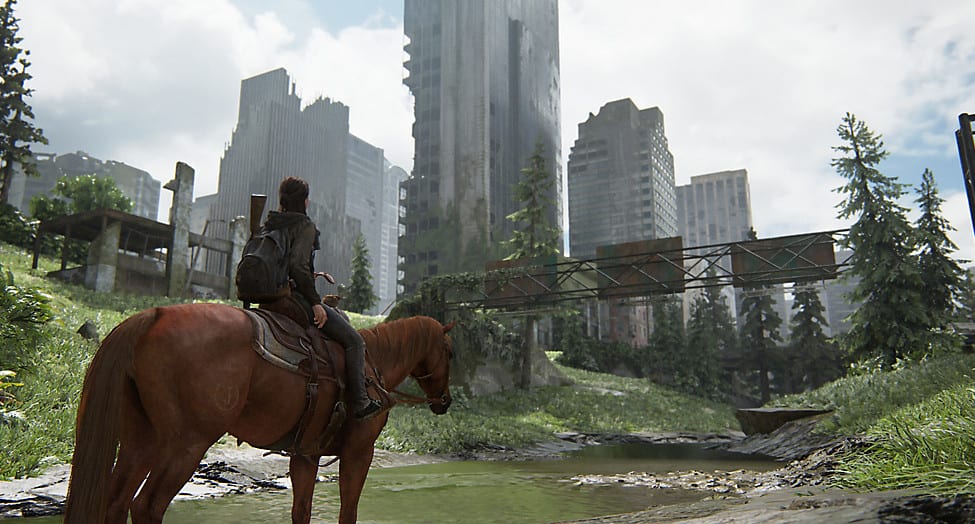
It's stunning how much work developers placed into this area of the game, for optional confrontations and cutscenes that the majority of players will never see. The urban setting, slowly being repossessed by nature, tells a tragic story. You find yourself wondering, "When did this highway crumble? How did these people die? What catastrophe caused this building to collapse into itself?"
There are other open sections in the game, but never again as open as this one. The game's narrowing, increasing linearity feels intentional; as the narrative stakes increase, the tempo of the game picks up as well. By the end, there are no natural breaks in the action; the developers are hurtling your character down an inevitable path. It is well done. It is also relentless and exhausting to play. But then again, so is a blood vendetta; it's an old observation that hate hurts the person who feels it more than it hurts the target.
And there's a narrative irony as well; that as the scope of the game narrows, the motivations of the characters--why they're doing what they're doing, and at what cost--become expansive and tangled. Two-thirds of the way through the game, the developers make a gutsy choice to interrogate their own narrative.
This is not done via a flashback or a pre-rendered sequence; it is done through the gameplay itself. It is a go-for-broke creative decision, which lasts several hours, that emotionally challenges the player. Can you change your perspective on a character who, up until that point, was characterized in an intentionally one-dimensional manner? I could, to a point, but not nearly to the extent that the game wanted me to. I was too invested in Ellie and her emotional hardship to be objective and empathize with someone completely new. Also in the back of my head: this was a dilemma that Naughty Dog had engineered themselves.
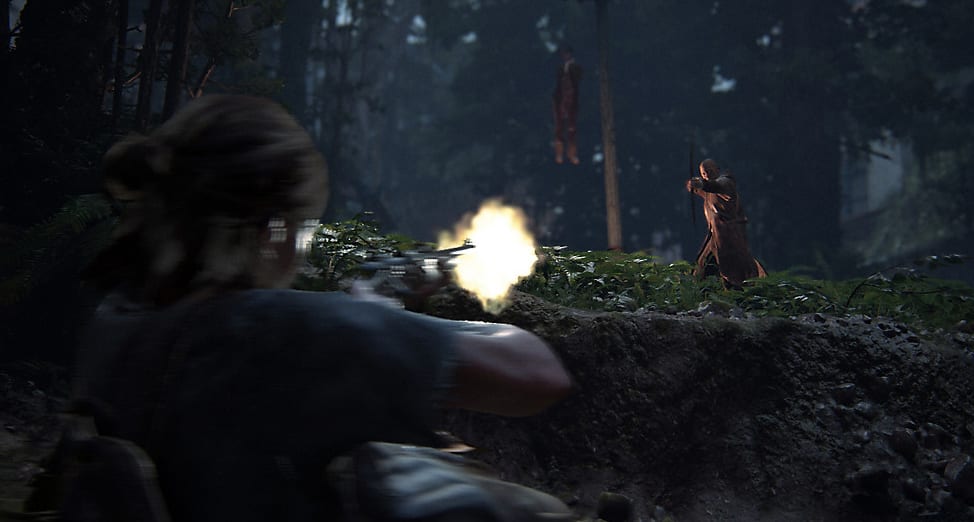
Games cannot and should not always be judged by their stories. No one debates the ludonarrative dissonance of a Mario game, because the Mario franchise's brilliance lies solely in its gameplay. The 'rescue-the-princess' story is merely an excuse to frame the platforming. But The Last of Us Part II, which has brilliant gameplay, demands we take its story seriously. The way the game deftly employs cinematic devices and narrative structure makes it clear how it's meant to be judged.
And while the story, filled with twists and narrative subversions, is complex, the characters subject to that story are not. Other than Dina, there is no new character on the level of Tess, Marlene, Bill, Riley, or even David, who brings out a different side of Ellie's personality or challenges her preconceptions about the world. Hate, the stated theme of this game, needlessly simplifies these new characters from the start. To ask players to do a 180-degree turn and empathize with their plights, more than halfway through the game, is asking too much.
That so much time and effort—so much beautiful craftsmanship and artistry—have gone into supporting such a misjudged approach is frustrating. Even more frustrating is that the ingredients are there for something more poignant. There is an implied theme, buried in the game's quieter moments, that explains some of the game's late twists—that for Ellie, the issue has always been one of control and autonomy, which everyone in her life, even Joel, deprives of her. But this overarching theme is buried, among other subtleties, under incessant cruelty and violence. By the end of the game—whether it was intentional or not—I felt numb to these characters and their motivations.
In a 2018 interview with Buzzfeed, Neil Druckmann said, "For us, with The Last of Us specifically… we don’t use the word 'fun.' We say 'engaging,' and it might seem like a minor distinction, but it’s an important one for us."
This game is not fun. And misery has a saturation point.

